Photography: Caterina Clerici
For the past three years, 62-year-old Rio de Janeiro resident Paulo Cezar de Paula has been living with his wife and 11-year-old son in an eight square-metre shack inside a large, run-down warehouse in the city’s port area.
Surrounded by giant cranes and construction sites, the building is just a few minutes away from the Praça Mauá square, heart of the Olympic city and home to the state-of-the-art Museum of Tomorrow, designed by Spanish architect Santiago Calatrava. Builders work relentlessly around the light-blue warehouse, assembling the city’s brand new tram line that will connect this industrial zone to the rest of the city.
“Living [in the port area] is like being in a gold mine,” says de Paula, who works in the port’s sizeable informal sector as a parking man. “A tranquil neighbourhood where you can work nearby, where you can raise your children. Who would not want to live in a neighbourhood like this?”
De Paula moved to the derelict warehouse in 2013, when mor than another 120 families, including his, were evicted from the abandoned government building they had been occupying for seven years, to make way for Trump Towers Rio, a project to build five 38-storey buildings on the former docks.
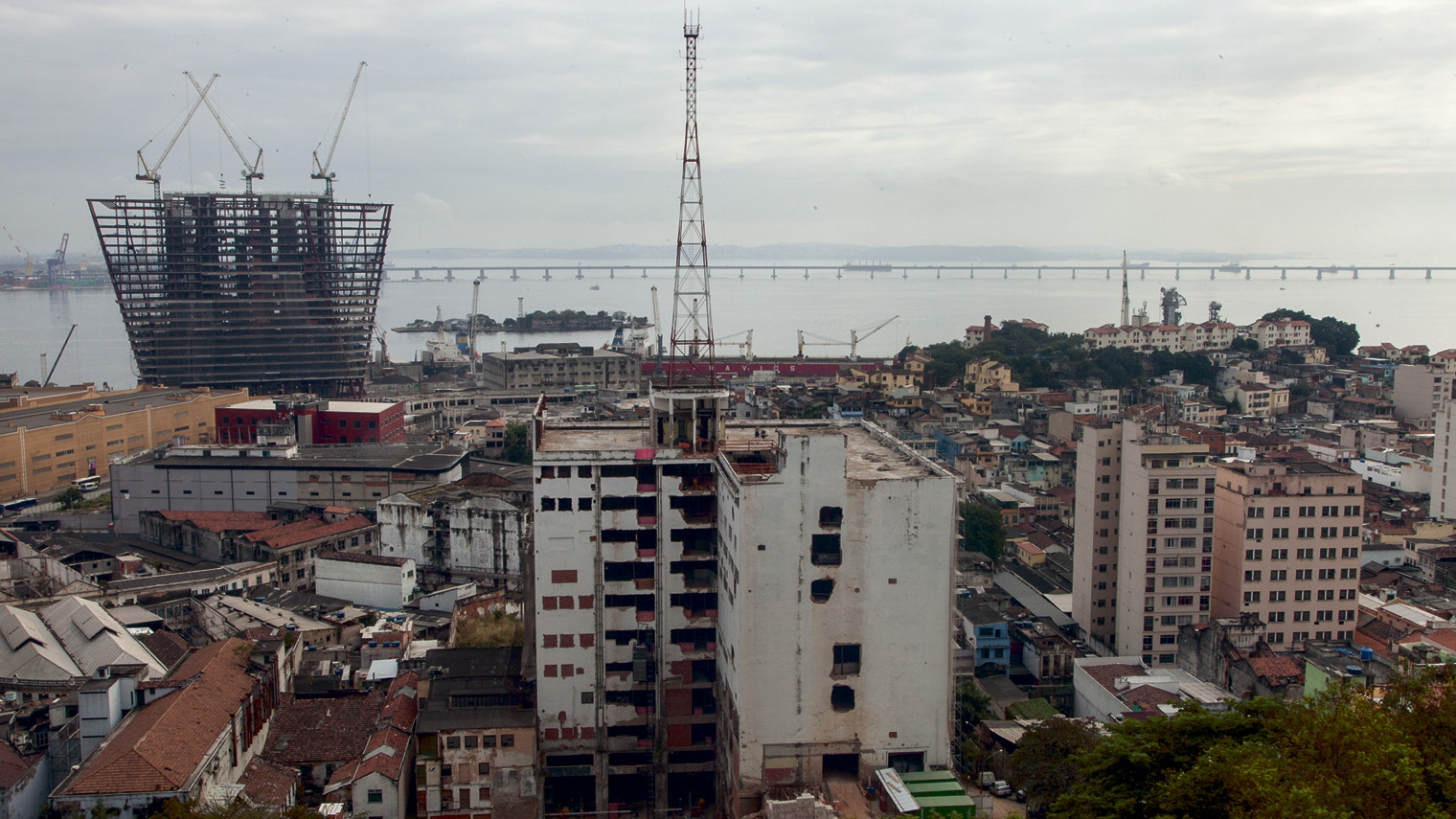
The port area of Rio de Janeiro from the Morro da Providência favela
The Trump Towers – the real estate franchise owned by US Republican presidential nominee Donald Trump – is part of a larger, £1.9 billion “revitalisation” of Porto Maravilha, Rio’s decaying port, that is a flagship project for the city’s Olympic legacy. Launched by the city in partnership with the private sector in 2009, investments into the five million square-metre neighbourhood will pour for another nine years, entirely remodelling the city centre.
“There are so many abandoned buildings out there and people need places to live,” says de Paula, a slender, black carioca – a local term for a Rio resident. Squatting is common in Brazil, a country with relatively generous housing laws, where squatters can attempt claiming ownership after five years of occupation.
There are so many abandoned buildings out there and people need places to live. But then, with all these projects and businesses they had to kick us out
The building he and other families were previously occupying had been left abandoned by Brazil’s port secretariat for over 20 years, before residents fixed it up and turned it into a home. Occupants were prohibited from drinking or taking drugs, and had to contribute one way or another to the organisation of the building. They had access to a wide range of services, from plumbing to civic and political education. “But then, with all of these projects and businesses they had to kick us out,” says de Paula.
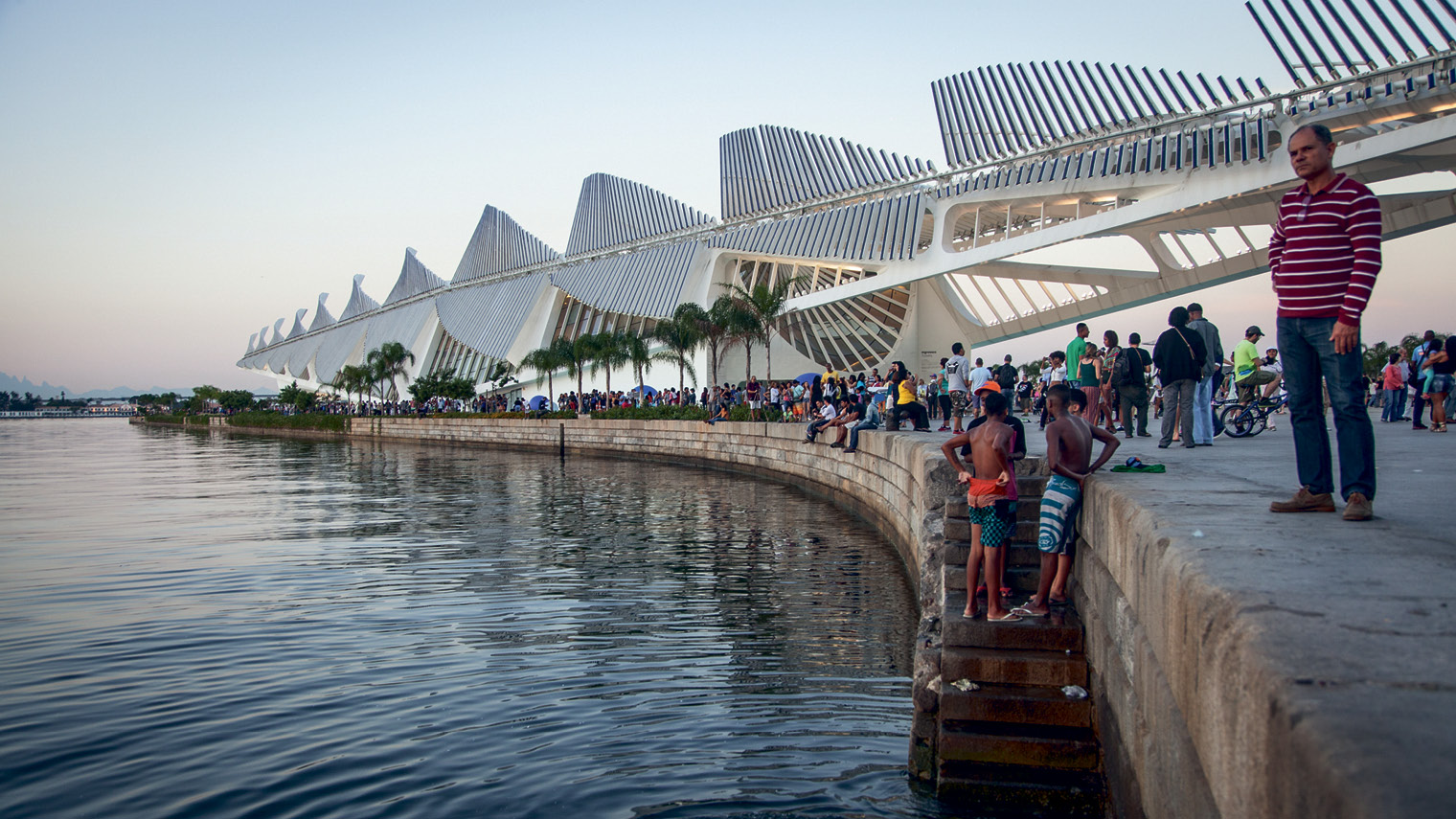
Locals swimming in Rio’s port area, next to the Museo da Amanha
Working-class culture
Porto Maravilha was once one of the world’s major slave trade hubs, having received an estimated 2.6 million slaves between the 16th and 19th centuries. It is the cradle of the nation’s Afro-Brazilian culture, where samba music and Capoeira sprung to life. Only ten years ago, a resident working on the foundation of his house unearthed one of the largest slave burials in history – a mass grave where slave traders ditched corpses of slaves who had died on their long and perilous journey from Africa.
Nearby, in the popular Pedra do Sal square, cariocas, quilombos – people who identify as the descendants of slaves – and tourists still gather twice a week to watch musicians, all sitting around the same table, play samba for hours.
The port is also a long-established working-class neighbourhood, sprinkled with tenement buildings, one-room accommodations with shared amenities. Since the early 19th century, these cortiços have offered an alternative to the working class, usually living in the periphery.
“Cortiços became a way for poor people to live in the city, close to their work in the port area,” explains Fernanda Sanchez, an urban planning professor at the Fluminense Federal University.
Once the heart and engine room of the city, the port has slowly fallen into disrepair. Decades of under-investment followed Brazil’s decision to move its capital city from Rio de Janeiro to Brasilia in 1960. Then 20 years later, the state of Rio inaugurated a larger port some 70km up north, shifting the huge agricultural exports and imports trade away from the city. The final blow, perhaps, was the construction of a one kilometre-long overpass highway along Rio’s legendary coastline, which, residents say, threw shadows and a pall of insecurity over parts of the neighbourhood.
When, in the mid-2000s, developers and government officials looked at where to house Rio’s growing population, the port was the ideal candidate – big, empty and right in the centre of town.
Rio was also gearing up for its third bid to host the Olympic Games and eager to make some serious changes. Housing renovations and new construction projects were encouraged by the government through a wide range of tax incentives. Height caps on new construction in the area were increased from 25 to 50 floors. The government solicited support from the private sector, and the country embarked on its first public-private partnership. The consortium of local firms included Odebrecht and OAS, both of which became embroiled in the huge corruption scandal at the state-owned oil company, Petrobras, which has cost Brazil an estimated R$29-42 billion (£6.8-10 billion).
The “revitalisation” – as its designers called it – included the demolition of the overpass, the construction of tunnels, the extensive renovation of roads, sidewalks and 700km of water and sewage infrastructure.
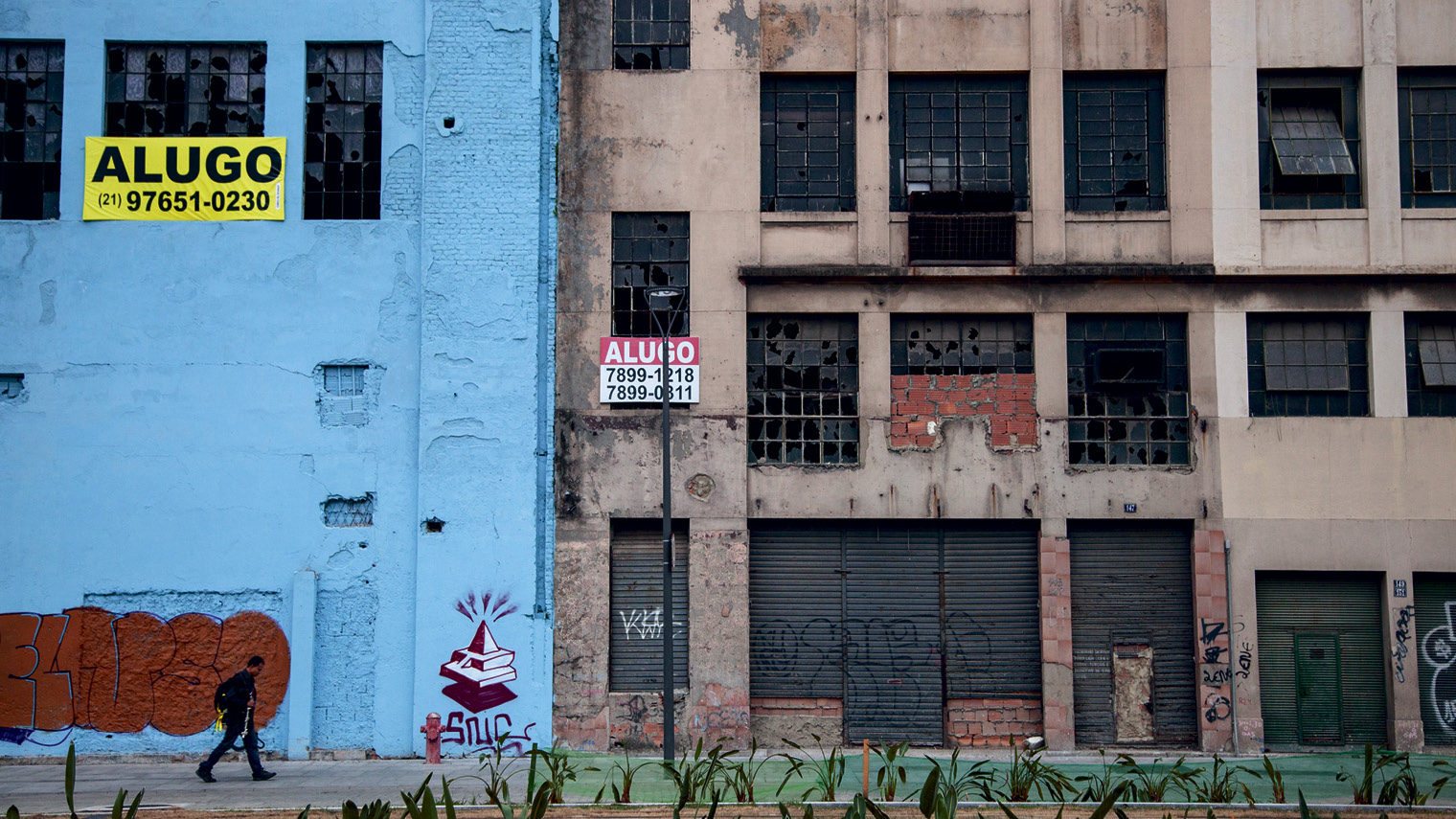
Abandoned buildings along Avenida Rodrigues Alves
Fighting for a place
As in other large cities, the arrival of investors and real estate developers was at the expense of poor residents, priced out at the advantage of a wealthier class.
“The port area needed investment,” says Clarissa da Costa Moreira, a researcher focusing on urban planning and critic of the project. “But in any city in the world, you’d be obligated to include a percentage of social housing, I’ve never seen this.”
More than 670 families have been forcefully removed from their homes since the launch of the Porto Maravilha project, according to a report from Brazilian NGO Comitê Popular. So far, only two social housing projects are known to be in the works. Critics who have studied the proposal argue that the flimsy social housing plan has no specific budget – a source of concern as the country is plunged in one of the worst financial crises it has ever weathered.
Moreira worked with the city mayor’s office in the 1990s, putting together pilot programmes to renovate and rehabilitate run-down houses before giving them back to their original residents. She argues the renovation project was left in the hands of wealthy construction companies with little regards for the working-class residents that have always been living in the port area. “This project has existed since 2009 but they only presented a social housing plan under social and media pressure in 2015, six years later,” she says.
Development plans had left a third of the population of Morro da Providência, the high perched favela that is the city’s oldest informal settlement, under threat of eviction. An intense media campaign – given a visual boost by a project by the French artist JR, who covered some of the neighbourhood’s houses with large-scale prints of residents’ faces – and legal action against the city halted the plans, but only after 140 families had already been removed. The case is now in the hands of the court.
De Paula’s shack is down the hill from Morro da Providência, in Gamboa, a district mostly made up of abandoned land and empty warehouses along the docks.
We fought very hard to win this building in the centre, so that poor people, who built and gave their sweat for this part of the city, could live here
“My family and I are living here so that other people from outside do not come and try to occupy it,” says Da Paula, sitting in the large empty warehouse. Outside, a heavy chain lock keeps the entrance gate shut.
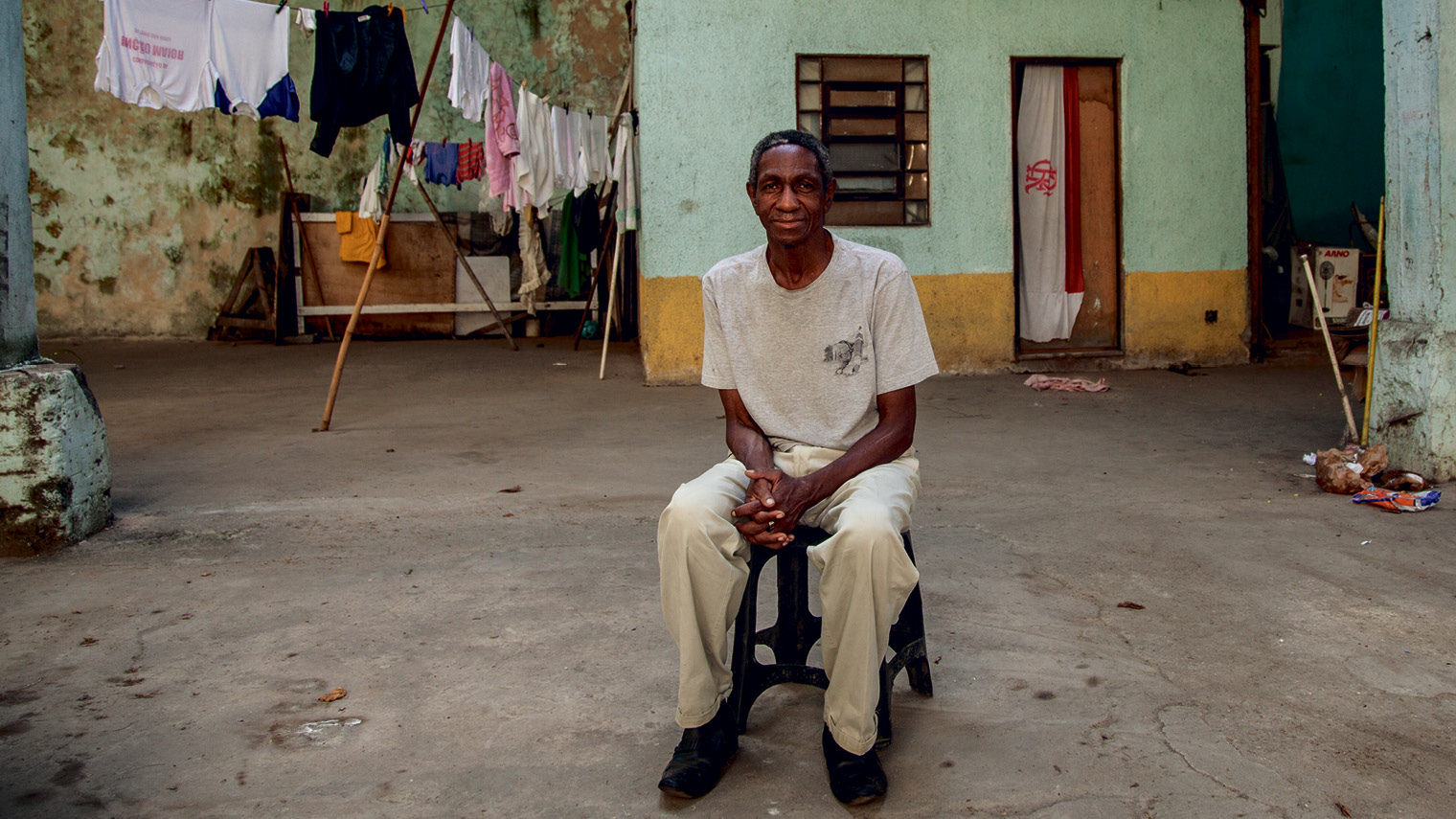
Paulo Cezar de Paula, 62, in the abandoned warehouse his family and two others have been occupying for the past three years. De Paula was evicted from the Quilombo das Guerreiras occupation in 2013 to make space for the Trump Towers Rio
Land prices have shot up more than 400 per cent since 2009. After lengthy negotiations with the city, and with the support of human rights organisations and activists, he and 120 other families were offered a settlement – they will be given apartments in a large building that will be erected on top of the warehouse.
“They offered us other places, in more peripheral neighbourhoods very far from the centre,” recalls Roberto Gomes dos Santos, 49, who was part of the negotiations with the city after the evictions, “but we fought very hard to win this building in the centre, so that poor people, who built and gave their sweat for this part of the city, could live here.”
Organised groups, like dos Santos’, have had some success at making the case for staying in the centre of the city. Isolated residents, however, struggle to fight the system, which could explain why the government has refused to recognise another community under pressure – the residents of the cortiços.
Tenements in Rio predate the city’s first favelas. They offer small individual rooms with shared toilets and bathrooms that can house up to six residents at a time. They stand as a testimony of Rio’s history of thriving working class and former slave communities, and continue to offer temporary or permanent housing solutions for the poor. But cortiços are not recognised by Rio officials, therefore barring their residents from joining the negotiation table.
Luis Carlos Rodrigues lives alone in a tenement located in the buzzing centre of Porto Maravilha. He occupies one of the 59 single rooms available for rent in this two-storey building, paying a little under £85 a month. All residents, almost entirely working men – mostly Brazilians and a few immigrants – share a single outdoor kitchen and one bathroom. For most, the central location is vital. Rodrigues, a street vendor, needs to be near a commercial hub to sell Coca-Cola, biscuits, peanuts and, when it rains, umbrellas.
“This type of housing is illegal in Rio but legal in Sao Paulo,” says university researcher Orlando Santos Júnior, who is currently leading a first-of-its-kind research on tenements in the centre of the city. “That illegality turns the cortiços’ existence into a precarious one, where landlords don’t normally guarantee good living conditions to tenants, and don’t care about this type of housing because at any moment they could be shut down.”
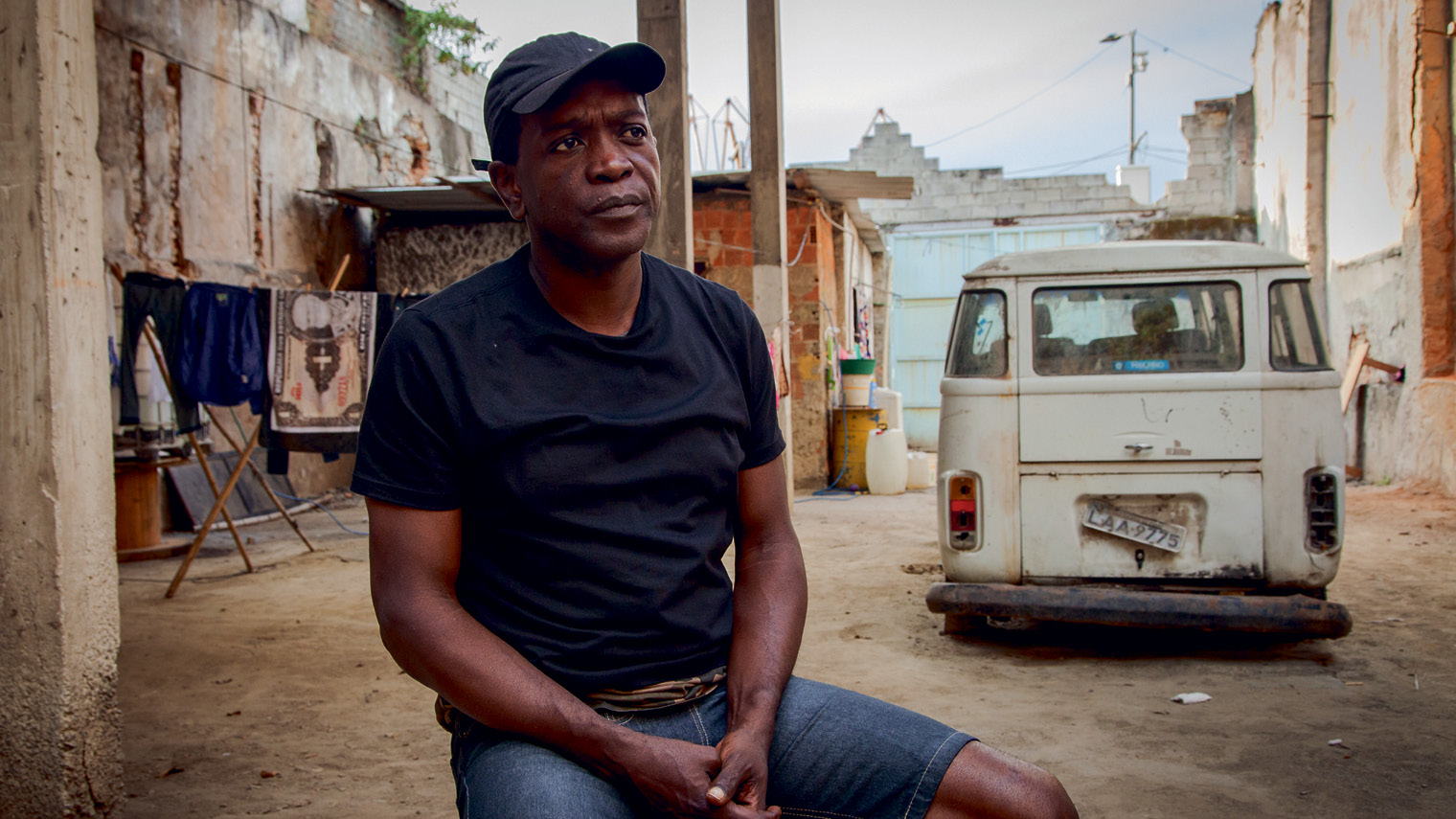
Roberto Gomes dos Santos, 49, used to live in a squat called “Quilombo das Guerreiras” that him and 120 families had occupied for seven years. They were all evicted in 2013 as buildings were cleared for the Trump Towers Rio development
Passing the buck
The government of Rio says that it has limited control over the social aspects of the renovation project, since none of the money invested is coming from its own accounts. According to the city – and CDURP, the body created to represent the government in the negotiations with the winning consortium – public money in the public-private partnership comes from the sale of “air rights” in the port zone, where developers must buy permits to build above a certain height threshold. Officials say the money accumulated through the sale of those air rights would then be used to invest in Porto Maravilha, along with the consortium’s private investment.
However, the mechanism did not raise the amount of money that the government had hoped for. In the midst of a deep financial crisis, few investors have bought air rights to develop real estate projects in the area, and a large quantity – £838 million – were eventually bought by a fund administered by the government-owned bank Caixa Econômica Federal. What’s more, the money used to acquire those air rights came from an indemnity fund, created in the 1960s to protect workers fired without a cause. Critics argue that the use of federal funds make this a public investment.
“It’s important for them to say it’s private funding and not public so the people don’t have a say in it,” says Renata Neder, a human rights advisor with Amnesty International in Brazil.
Most of today’s port was built from 1906 onwards by the government as an extension of the mainland area. Critics say that by definition, the port is a public space and should have the people’s interest at heart.
“The working class and black people have always been here in the centre, working. They helped build the big buildings here, and now they do not have the right to live in the places that they helped build,” says dos Santos. “That is exactly what we are fighting for, to bring the people who gave their sweat for this part of the city to live here.”


Working-class culture



